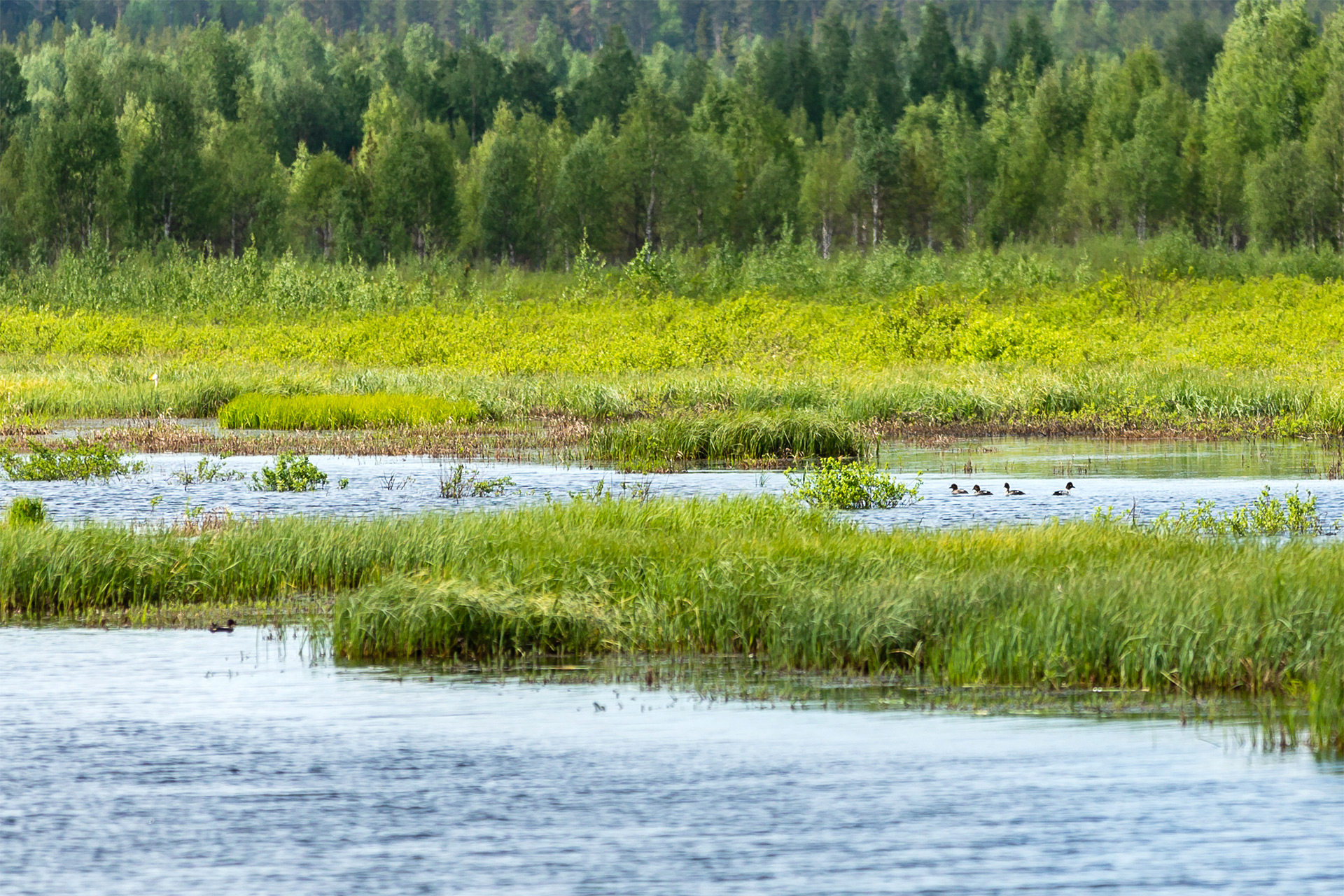The Benefits of Wetlands
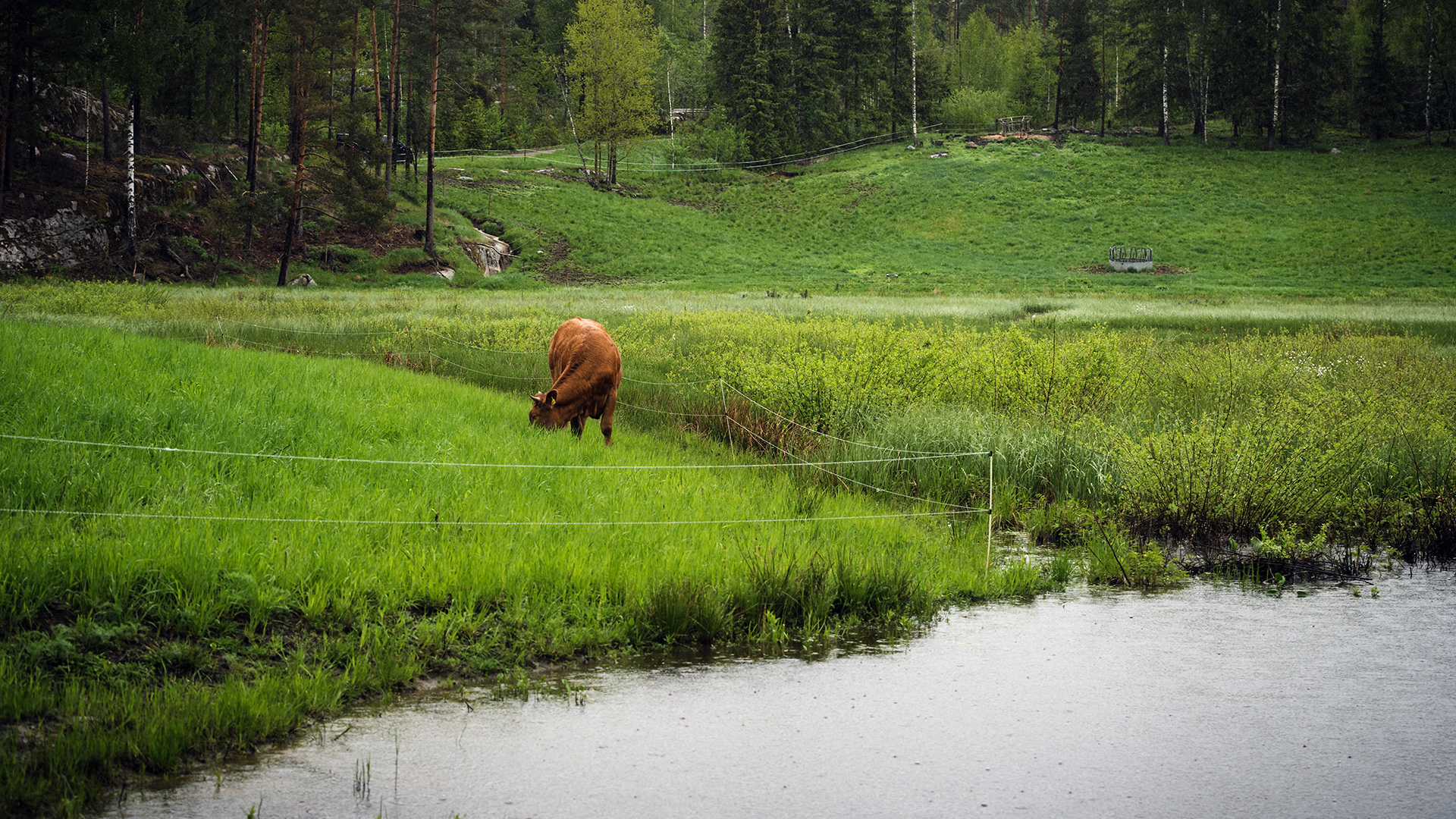
The Benefits of Wetlands
Wetlands offer numerous benefits to nature and humans. They are crucial habitats for many species. Bird watching, nature observation, and hunting are among the most significant recreational uses of wetlands. Additionally, wetlands significant ecosystem services as they mitigate floods, bind nutrients and sediment from drainage waters, store carbon, and provide scenic diversity.
Biodiversity
Many waterfowl species have declined in recent decades. The decline is particularly alarming in nutrient-rich inland waters, with species such as the Common Scoter, Northern Shoveler, Northern Pintail, Garganey, Coot, and both the Common Pochard and Tufted Duck affected. Reasons for the decline are suspected to include the loss and degradation of suitable habitats like seasonal, temporary and permanent wetlands and water quality in shallow fertile lakes, predation by small predators, and a decrease in Black-headed Gulls that protect nests from predators. The lack of quality wetland habitats combined with high predation levels negatively impacts the populations of dependent species.
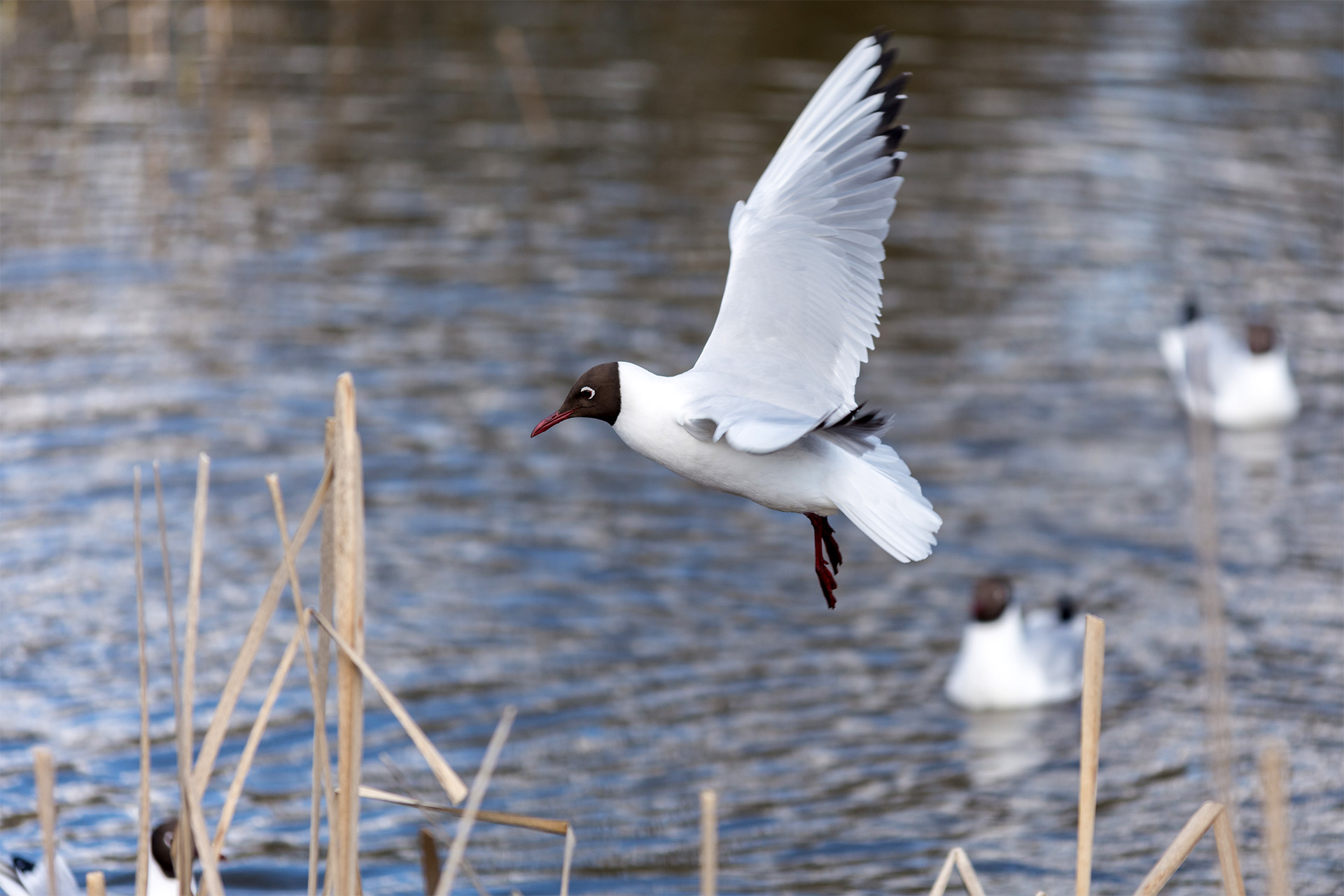
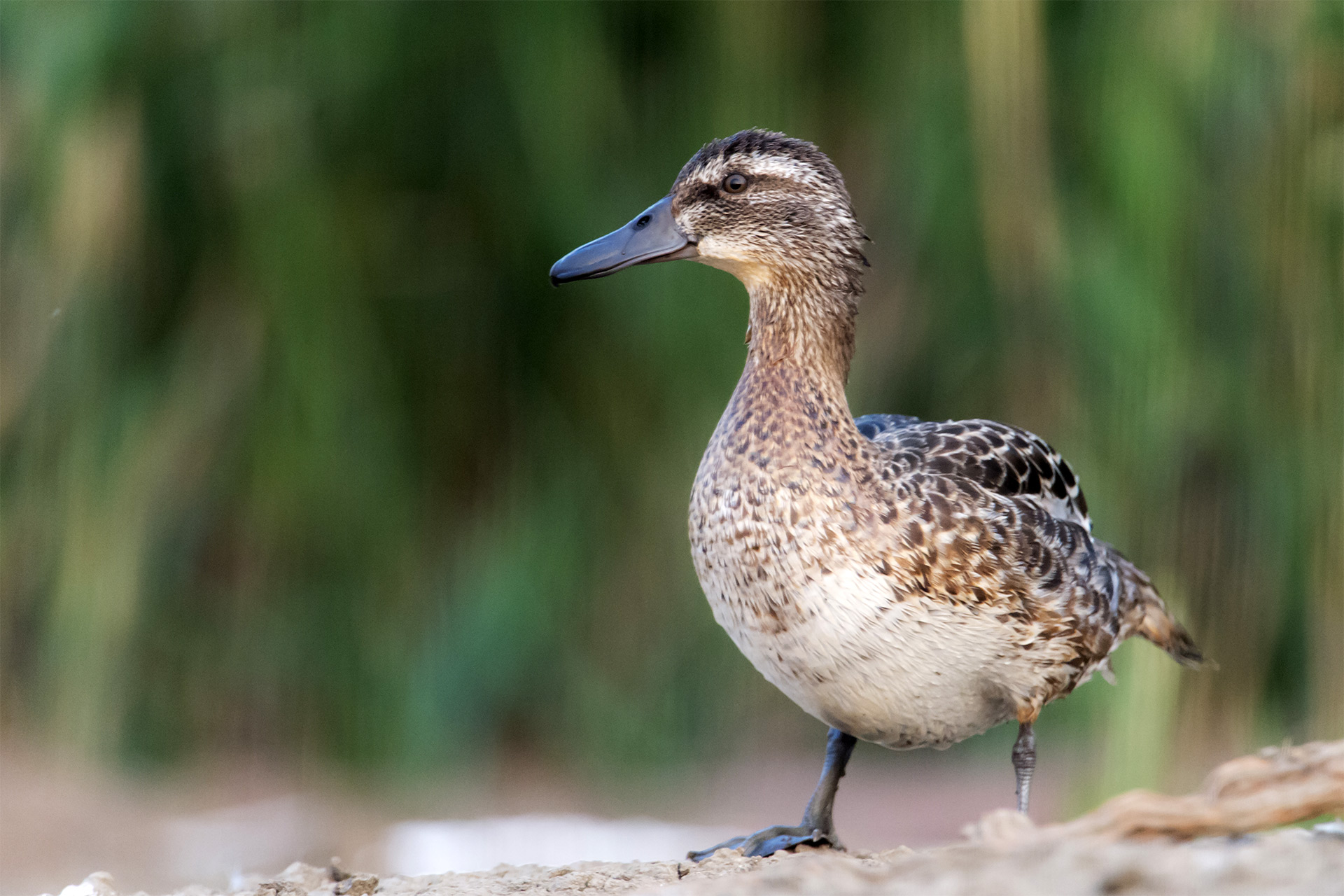
In Finland, the condition of wetlands has been deteriorating for a long time, with thousands of shallow, nutrient-rich bird lakes being partially or completely drained. Additionally, nutrient emissions from agriculture and forestry have burdened water bodies leading to over eutrofication and browning of the waters. Beavers, creators of wetlands, have been making a comeback in the Finnish nature for almost a century.
Wetlands, whether naturally created by beavers or artificially by humans, as well as natural seasonal wetlands, possess many features that ordinary lakes often lack. Their shallow, warm waters support a diverse ecosystem, offering a good growing base for aquatic plants and high densities of invertebrates which in turn provide food and shelter for many species.
Flooding in wetlands, either by beavers, humans or natural flooding by snow melt or heavy rains, releases nutrients for the ecosystem’s use, boosting primary production. This effect cascades through the food chain, offering ample nourishment to aquatic invertebrates, frogs, and newts. Many terrestrial mammals feed on wetland vegetation, and for instance, bats hunt the invertebrates emerging from wetlands.
Waterfowl also benefit, as females require ample invertebrate nutrition for egg production and duckling growth. Wetlands are particularly significant as brood environments, where the shallow water allows ducklings easy access to invertebrates on the bottom or insects resting on plants.
Vegetation also provides protection for both broods and adult birds. Islets, stones, and logs serve as resting and drying spots for ducklings. After nesting, during the molt when adults are flightless, they seek out sheltered, food-rich wetlands for molting.
Imitating beavers when establishing a wetland can be beneficial. Beaver-dammed wetlands experience cycles of flooding and non-flooding over the years, maintaining high productivity and biodiversity. Flood meadows revealed after floods provide food for many mammals. Shallow, flooding shores are favored by waders and can gather large flocks of feeding birds during migration. If the wetland freezes to the bottom in winter or is occasionally drained, competition from fish for invertebrates decreases. Species like the Black-throated Diver and newts thrive in fishless wetlands along with other waterfowl.
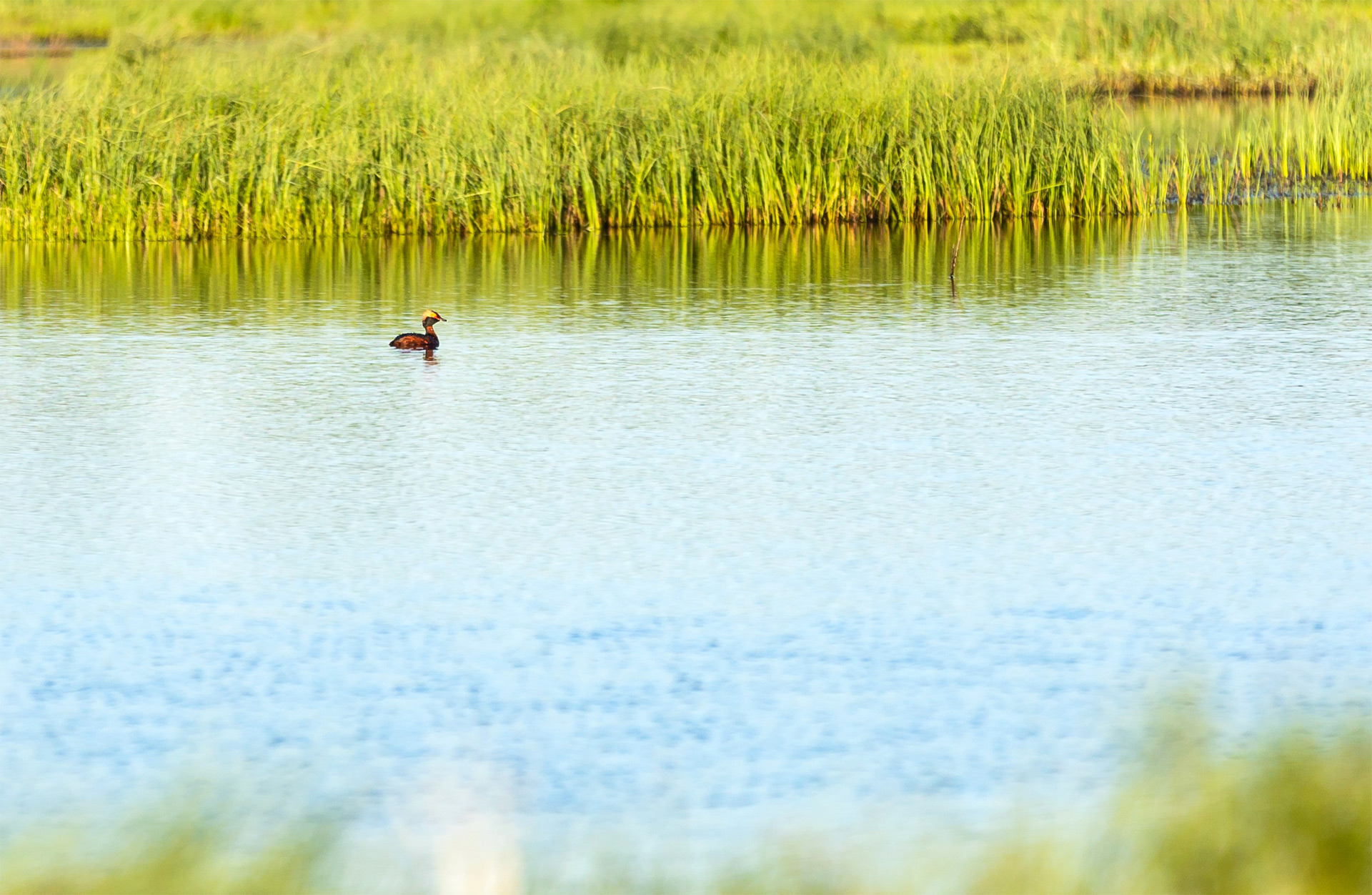
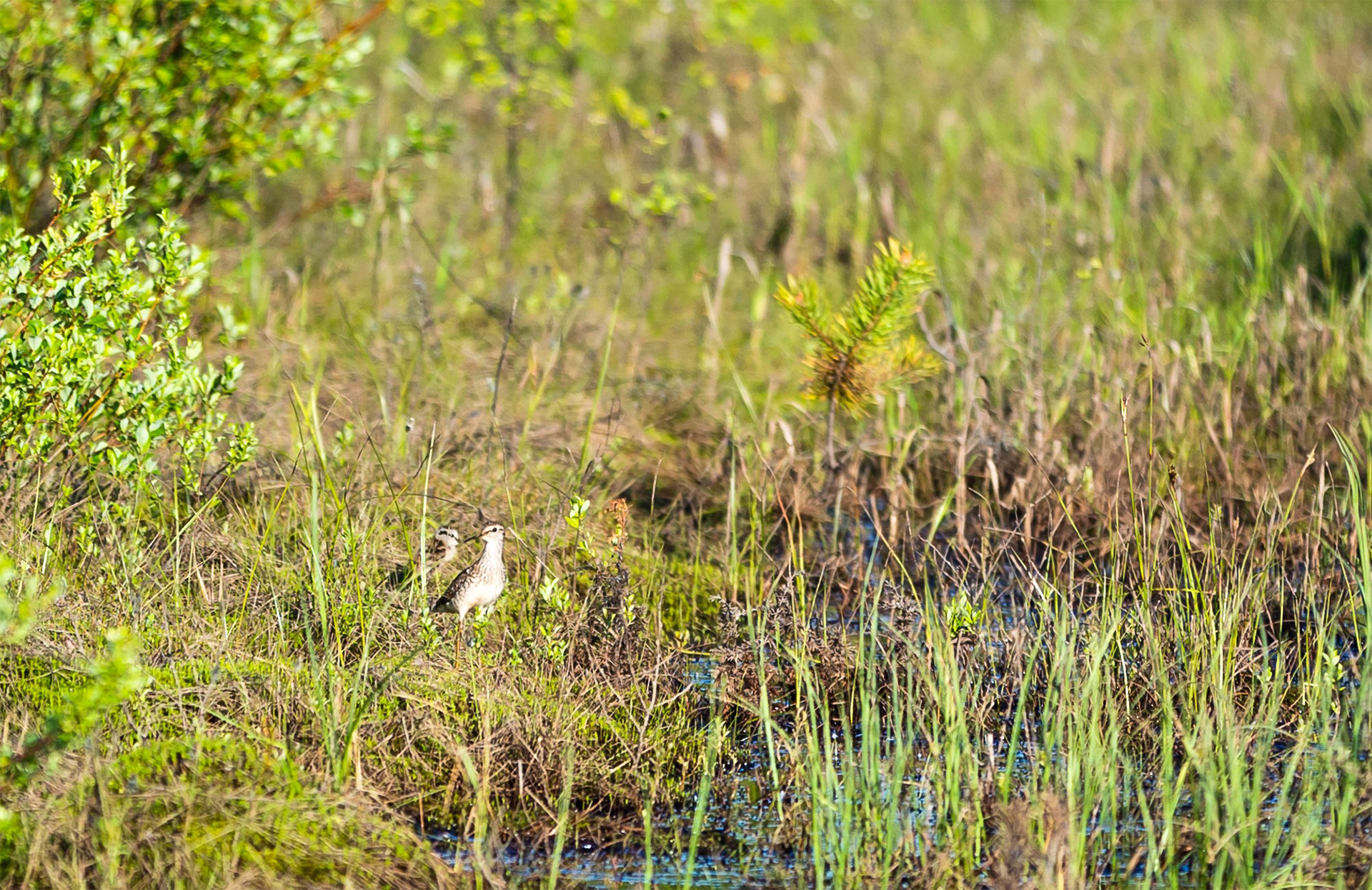
At their best, established wetlands form a network where wetlands of varying ages and depth profiles provide a diverse habitat. The needs of waterfowl vary both between species and within the breeding season. A network of several wetlands on a single open field and within farm woodlands can enhance the comfort and local brood production of waterfowl more than an individual site.
The network of wetlands and nutrient-rich lakes defines the future of waterfowl populations, their size, and whether they are viable enough to be hunted. A network of high-quality habitats is crucial for the well-being and abundance of game populations and therefore a key interest of hunters to invest into the crucial habitat quality and quantity.
Watching Birds and Wildlife
Wetlands are excellent destinations for birdwatchers, with their value enhanced by often easy accessibility in one’s local area. At a wetland, one can observe the Black-throated Diver engaging in nesting activities or the Eurasian Hobby hunting dragonflies. During summer nights, the explosive song of the Sedge Warbler and the whistling of the Savi’s Warbler can be heard. Wetlands serve as wonderful local sites for family birdwatching trips or school theme days. It’s also possible to construct bird towers, boardwalks, or shelters with campfire sites through community volunteer efforts.
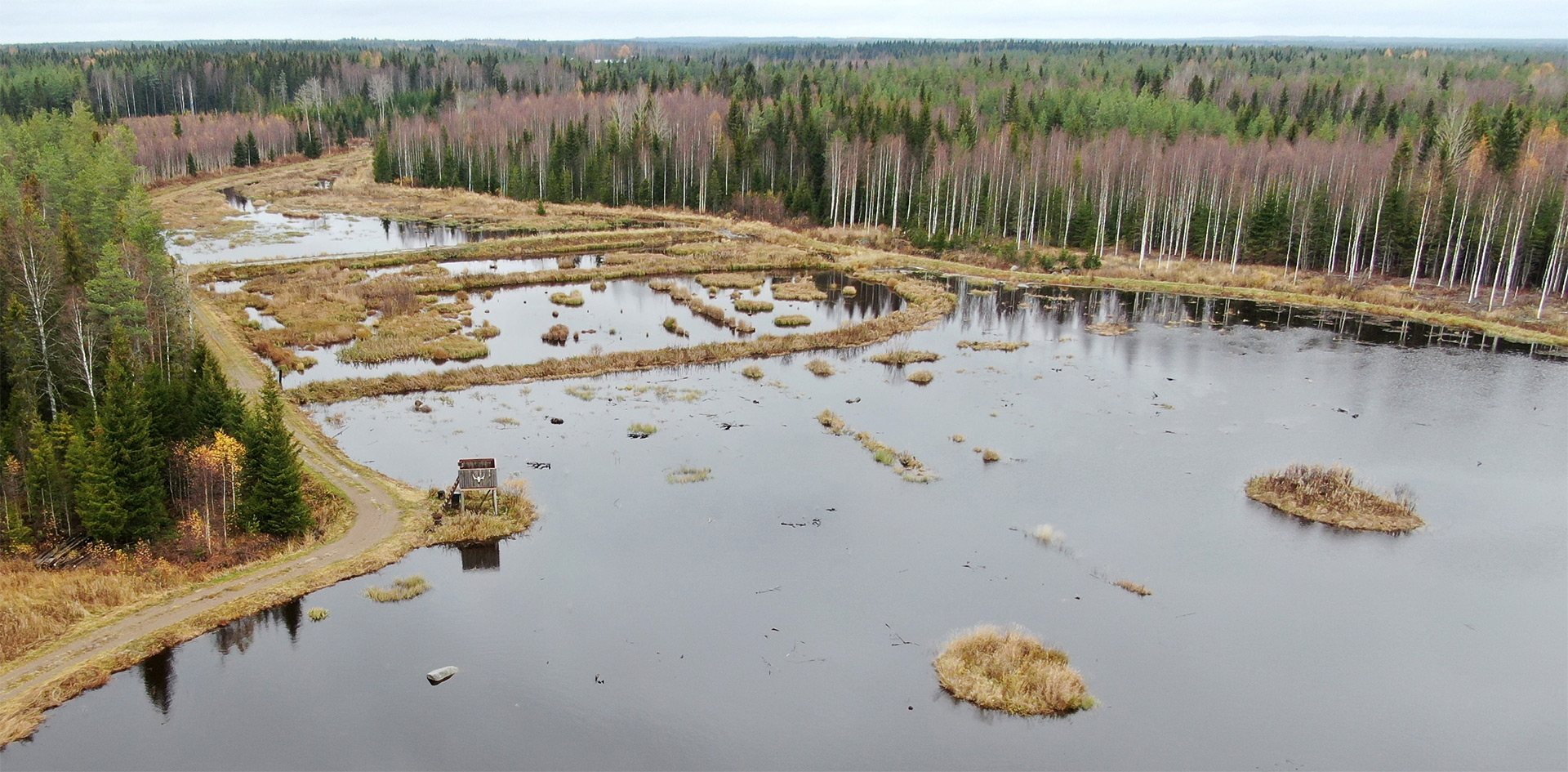
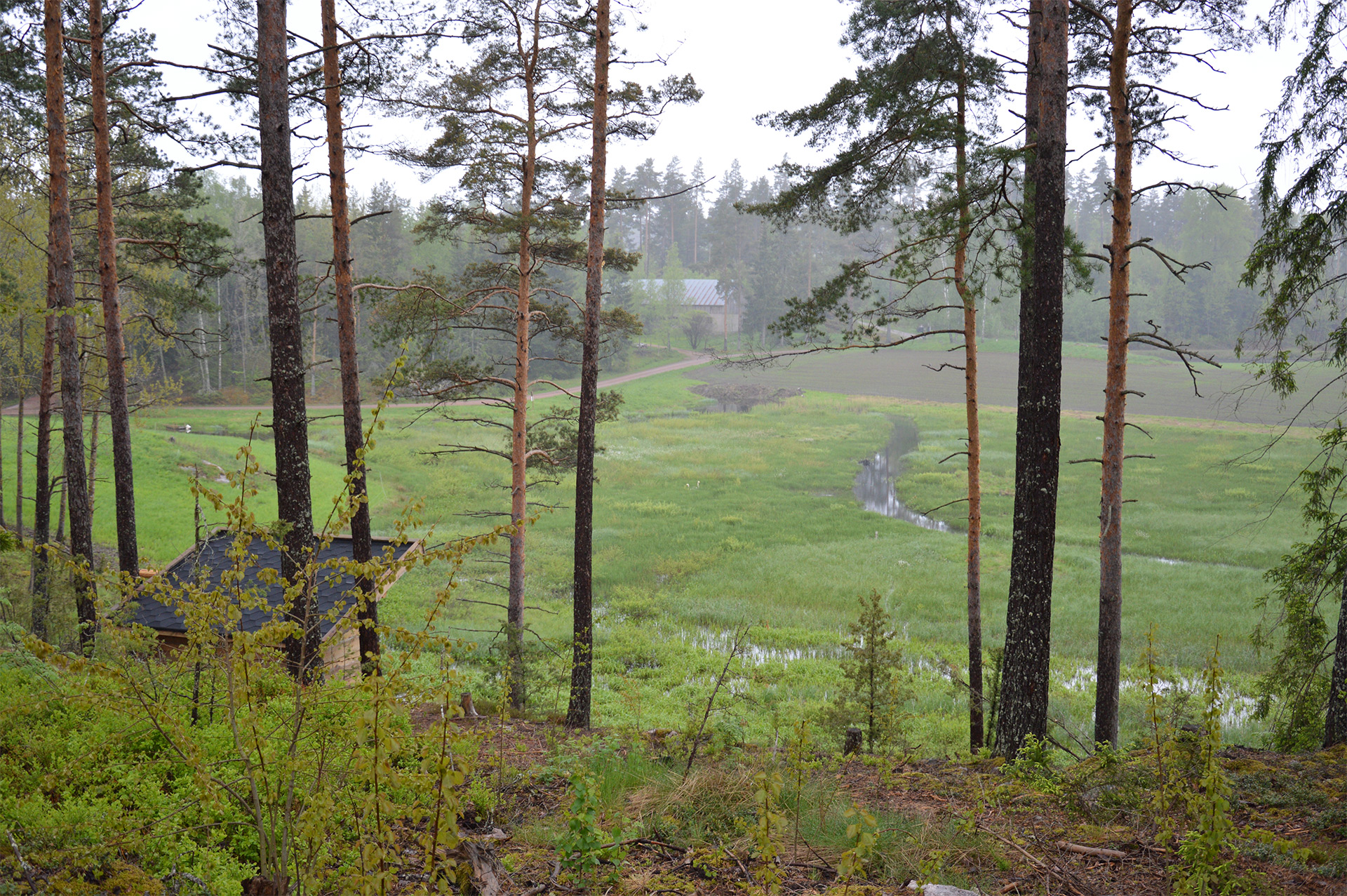
Waterfowl counts provide valuable information about the state of bird populations. It is advisable to conduct both pair and brood counts of waterfowl in a wetland following the guidelines of the Natural Resources Institute Finland.
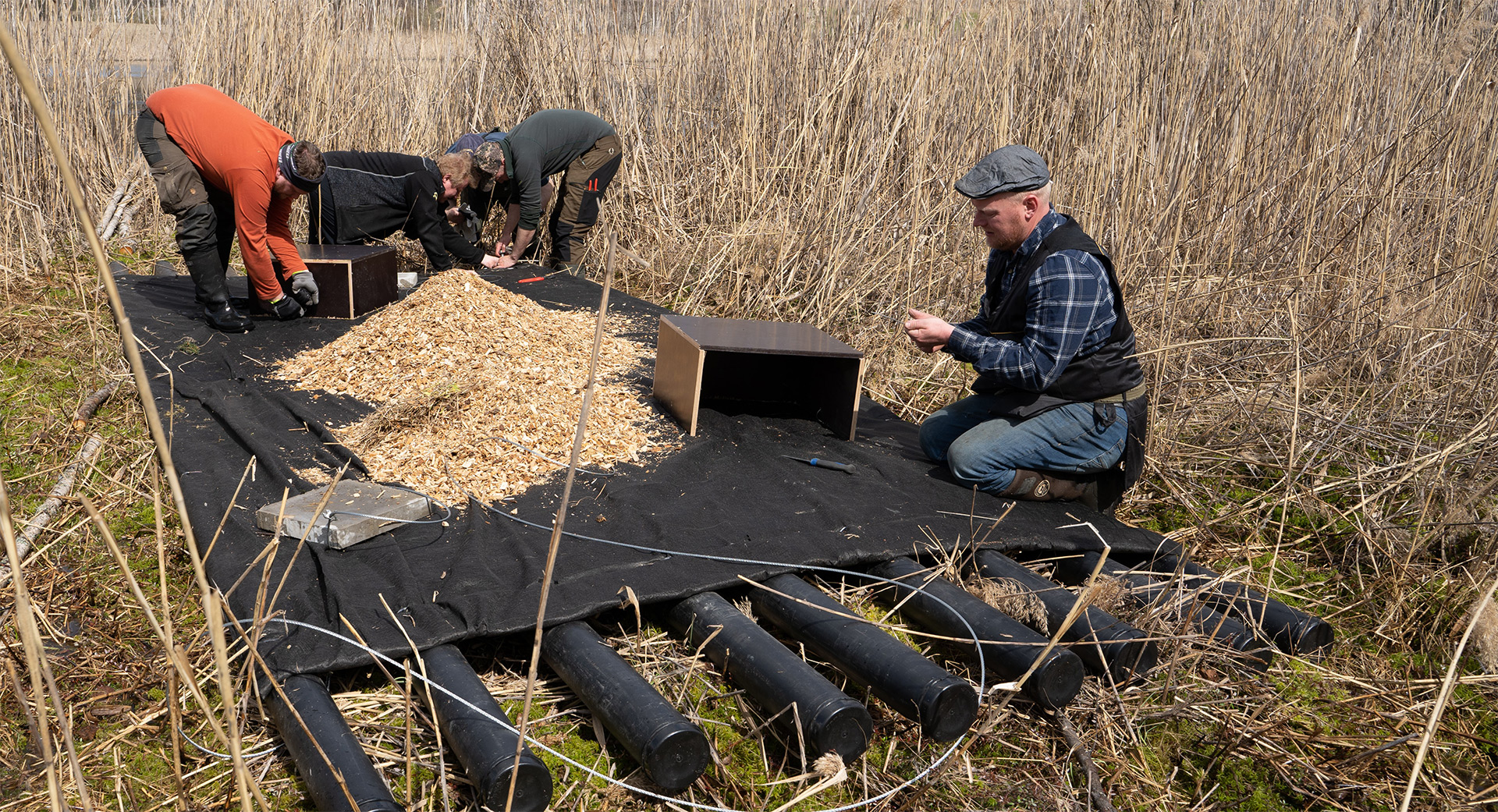

Hunting
Hunting is a popular recreational use of wetlands, and the desire to improve one’s hunting opportunities is one of the primary reasons at the local level for the establishment, restoration, and maintenance of wetland habitat. There’s a clear connection between conservation work done by hunters and the continuity of hunting. By creating and actively managing habitats suitable for waterfowl, local brood production can be enhanced, thereby laying the foundation for the ecological sustainability of hunting at local, national and at the flyway level.
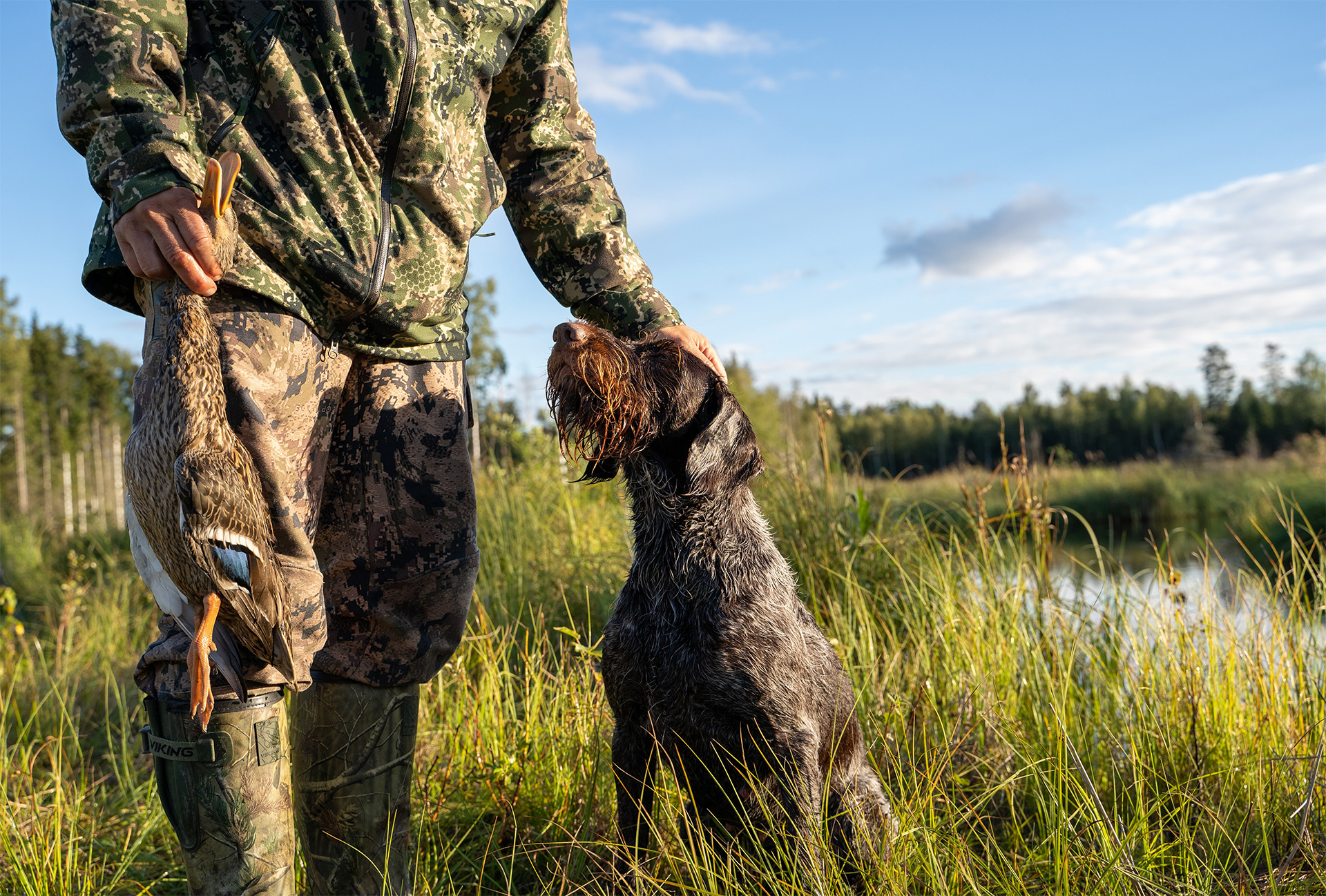
Waterfowl and especially their broods have many predators. Invasive species like minks and raccoon dogs can significantly reduce the breeding success of waterfowl by raiding nests for eggs and preying on ducklings. To ensure that the valuable work of improving habitats for waterfowl does not go to waste as disappearing broods, special attention should be given to organizing sufficiently effective small predator control. Effective small predator control as part of other wetland management practices benefits game birds as well as species requiring immediate and demanding conservation actions in wetland environments.

Successful brood production alone does not ensure the strengthening of waterfowl breeding populations in one’s wetland or at a wider scale. A responsible hunter regulates annual hunting pressure based on brood production. A good guideline is that in breeding habitats, annual hunting mortality should be significantly less than the area’s brood production, thus ensuring that the habitat positively affecting waterfowl populations.
The most reliable way to estimate the annual maximum harvest of local breeding birds is by observing wetland life throughout the summer and conducting annual waterfowl counts, which provide a comprehensive overview of the local waterfowl population and breeding success. Besides local production, it’s also important to consider the overall condition of the species at flyway level and focus hunting on those that are thriving, such as the mallard.
In addition to harvest planning based on waterfowl counts, it’s advisable to establish common rules at local level for hunting in wetlands. These rules could include hunting quotas, time restrictions, or the creation of areas protected from hunting. Developing self-regulation in hunting can best prevent the premature migration of waterfowl, extending the active hunting season and increasing our national responsibility for managing migratory waterfowl sustainably.
Water and Flood Protection
Wetlands promote water and flood protection because
• they facilitate nutrient removal from the drainage waters of agriculture and forestry as water flow slows,sediments settle
• vegetation and bottom soil absorbs phosphorus
• both vegetation and microorganisms bind nitrogen
• they stabilizate overflow events
In wetlands, the speed of water flow decreases, causing suspended particles to settle at the bottom and become sediment. This process removes nutrients bound to the particles from the water, thereby reducing the nutrient load on downstream lakes. Additionally, wetland vegetation utilizes some of the phosphorus dissolved in the water and from the sediment through its roots, reducing the total phosphorus content of the water leaving the wetland. The vegetation and microorganisms in the wetland also bind nitrogen, releasing it back into the atmosphere.
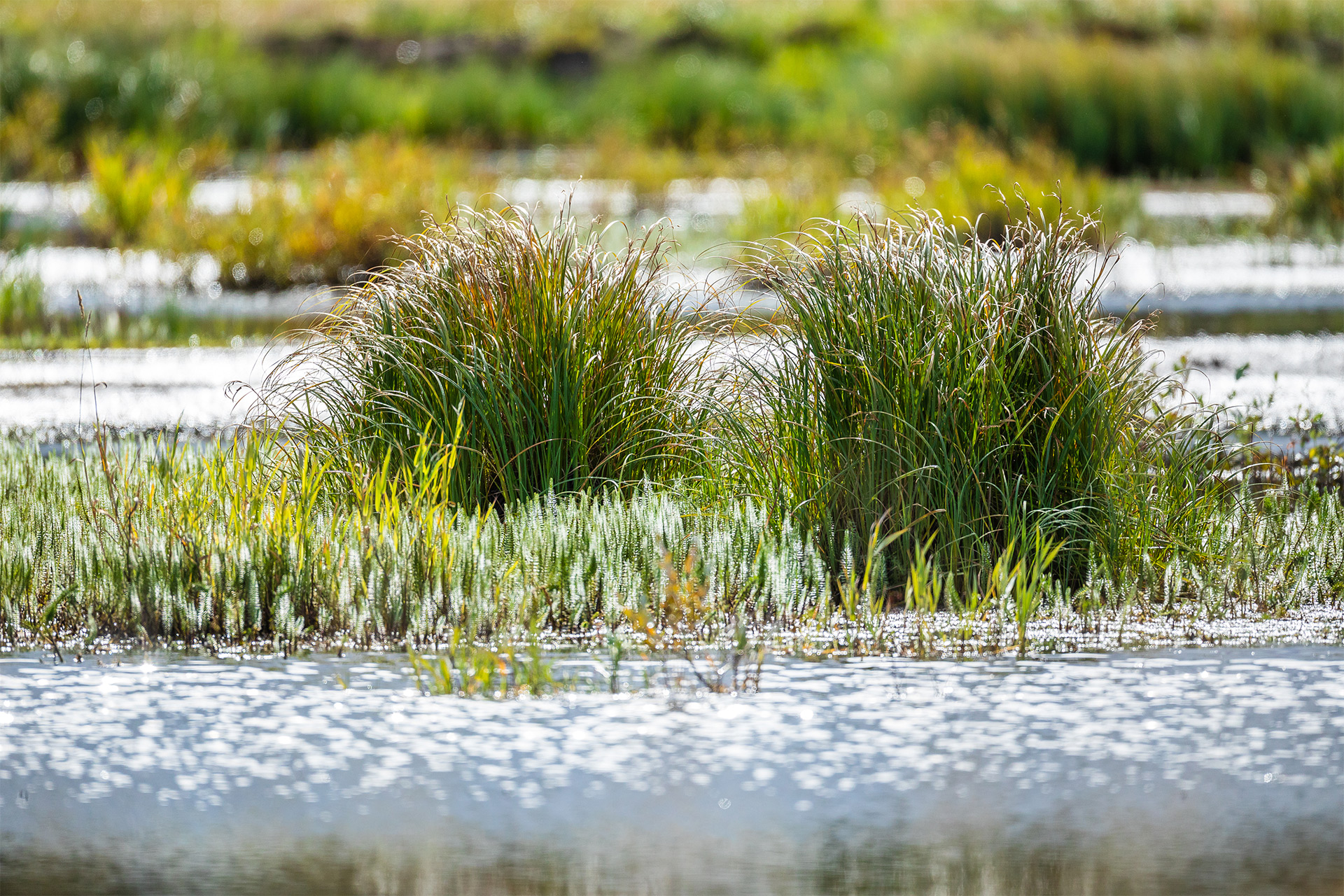
Wetlands balance overflows occurring in autumn and spring by slowing down the flow speed and temporarily storing water as water levels rise. This stabilization affects the flow in downstream channels. The significance of wetlands for flood control and water protection largely depends on their size relative to the upstream catchment area and the incoming water flow from that area.
If a wetland is too small relative to the volume of water flowing through it, its capacity to store water is limited, and the flow rate remains high. As a result, water passes through the wetland too quickly, leaving insufficient time for suspended particles to settle at the bottom. Additionally, this rapid flow prevents microorganisms and plants from utilizing the nutrients in the water, which would otherwise help reduce the overall nutrient content.
With proper sizing, a wetland can provide both water protection and flood control benefits for downstream water bodies. In natural flood management, the primary focus is on retaining water within the catchment area.
The smaller the catchment area and the larger the wetland, the more effectively the wetland can reduce temporary flood peaks and serve as a water protection solution. For example, the Jyrkännotko wetland in Lohja and the Joussuo wetland in Pyhäjärvi are good examples of headwater wetlands whose size relative to the catchment area is large. A few hectares of wetland can suffice to manage the runoff water from an area from several tens of hectares up to few hundred hectares.
A rule of thumb for a sufficiently large wetland for water protection is 1% of the size of the upstream catchment area. In water protection, it is also beneficial to consider local features. Streams and rivers grow from small trickles.
Landscape
The restored water surface in the countryside landscape is pleasing to the eye: who wouldn’t want to see the sparkle of water from the window of their car or home? A wetland established or restored amidst fields or in the shade of a forest often has scenic value. The wetland also brings life to the landscape as flocks of waterfowl circle above it.
Wildlife populations are significantly larger in landscapes full of different habitat spots that offer food and shelter. In agricultural landscapes, wetlands, grass strips along ditches, conservation fields, effective crop rotation, and winter ground cover all contribute to species diversity and enrich the rural nature. In forests, diversity is enhanced by preserving undergrowth and shrubs for shelter, mixed woodland, and the management of transition zones and blueberry forests, alongside the establishment of wetlands.
